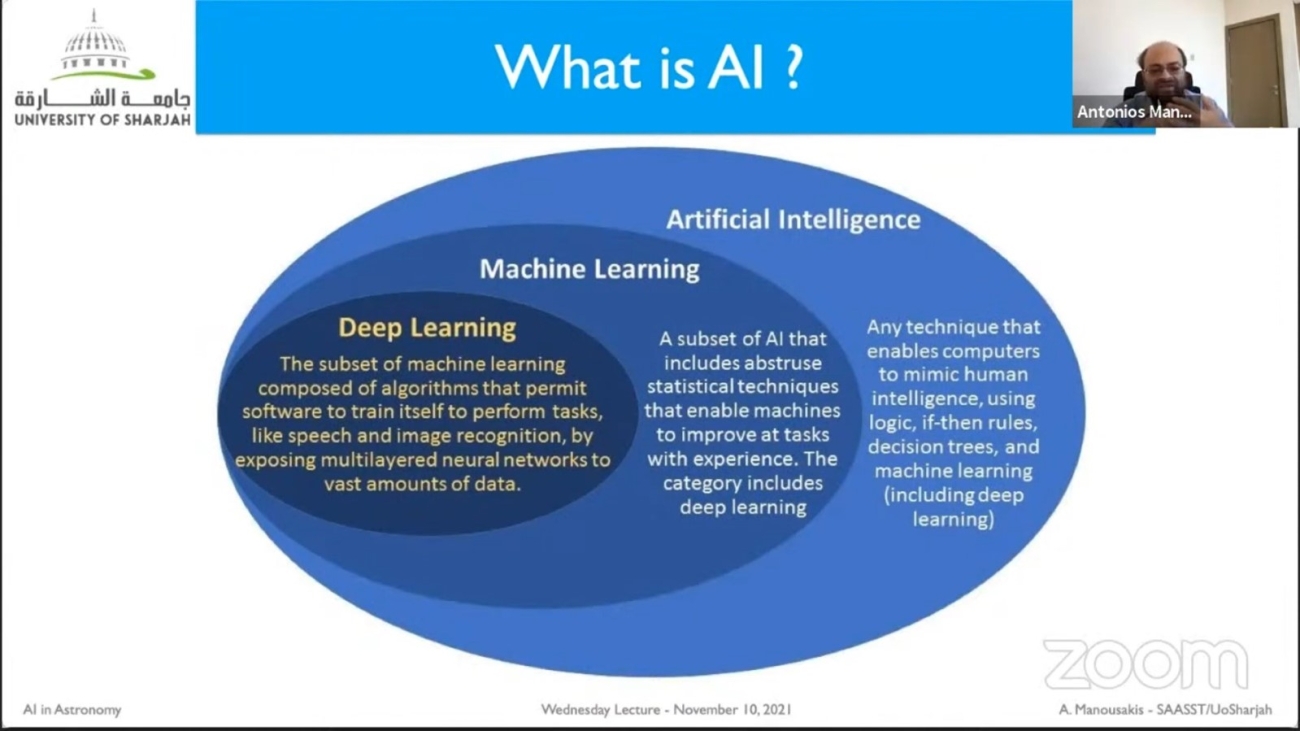petabyte (1,000 terabytes). The treatment and calibration of this huge amount of data cannot be performed using human powers, as in the old days. This may take a tremendous amount of time. Artificial intelligence is an exceptional tool. So, how is it used applied in astronomy? AI can be applied in different astronomical research, to name a few, exoplanet search, gravitational waves, the ever-changing sky, gravitational lensing, classification of celestial bodies (galaxies, clusters, or superclusters). Dr. Antonios explained the urgency of AI in all of these astronomical areas. To give one example, when the Vera Rubin Observatory, currently being built in Chile, comes online, it will survey the entire night sky every night with its three gigabyte CCD camera, collecting over 80 terabytes of images in one survey. This is to monitor how the stars and galaxies in the universe vary with time. Throughout the planned operations, the legacy survey of space and time of the Rubin observatory will collect and process hundreds of petabytes of data. To put it in context, 100 petabytes is about the space it takes to store every photo on Facebook.
The biggest challenges of the next generation of astronomy lie in studying all this big data. This is why astronomers are turning to machine learning (ML) and artificial intelligence (AI) to rapidly build new tools to search for the next big breakthroughs.
The lecture can be followed through the link: https://www.youtube.com/watch?v=VepN76mycD0



